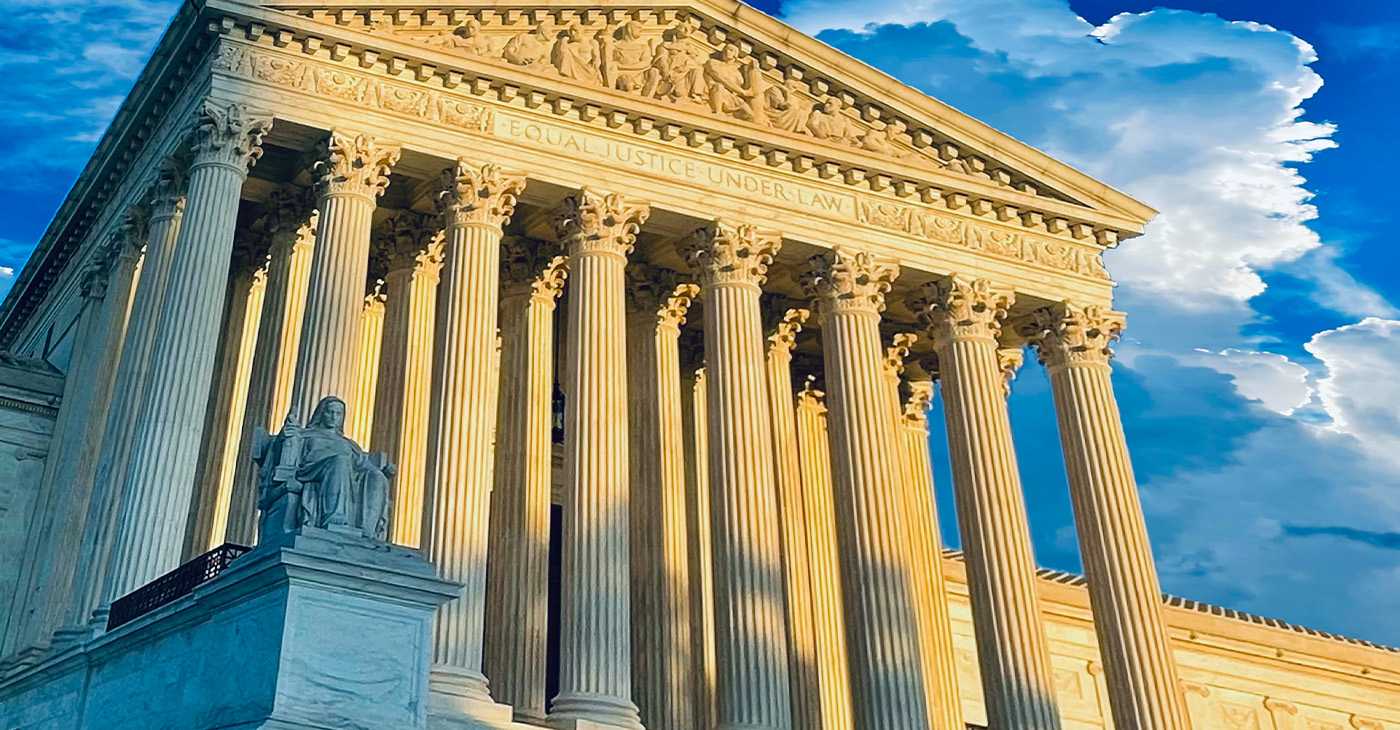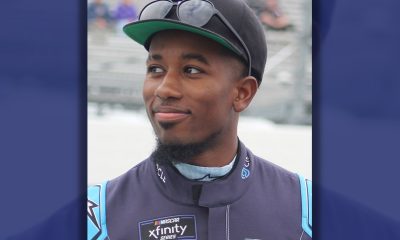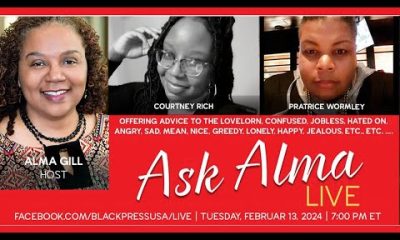Commentary
Commentary: Affirmative Action’s Death Knell Now Loud and Clear
Was the Manhattan DA Alvin Bragg — the man who could make history as the first prosecutor to indict a former president — an affirmative action recipient? Why would anyone ask that? But we know it’s the kind of slight all people of color face. After the incredulous ask, “What are you doing here?”

By Emil Guillermo
Was the Manhattan DA Alvin Bragg — the man who could make history as the first prosecutor to indict a former president — an affirmative action recipient?
Why would anyone ask that?
But we know it’s the kind of slight all people of color face. After the incredulous ask, “What are you doing here?”
Bragg grew up in Harlem on what is known as “Strivers’ Row,” where accomplished African Americans lived in good homes that matched their high status.
And yet, Bragg also knows what it’s like to be stopped by police just for being a person of color.
He also knows what it’s like to graduate from Harvard College and Harvard Law School.
And now that he’s on the verge of history, the man who is the possible perp of the moment, one Donald Trump, can only denigrate Bragg in accepted racist code, calling him a “Soros-backed animal.”
Trump’s reference to wealthy financier George Soros makes him anti-Semitic as well as anti-Black.
That’s how racist code has evolved.
And now Trump, by virtue of his Supreme Court appointments, is responsible for another evolution — the end of the ability to use “affirmative action” to flog an innocent person of color. That’s because in a few months, the high court is expected to end affirmative action at Harvard and essentially all institutions of higher education.
Since a SCOTUS review last October, there’s been little news as we all hope against hope that a tool for equity and equality isn’t negated by the conservative court.
The silence was broken this past week, when the New Yorker Magazine published excerpts from the trial that had been previously sealed.
The most damning thing revealed was a joke, an assessment of one male Filipino American Harvard applicant, written on official Harvard admissions stationery.
Jose is said to be the son of a farmworker killed by a tractor, who now supports his family of 14 while working as a cancer researcher AND playing football as a 132-pound defensive lineman (incredible considering his slight build). But he played at such a high level that not only was he named California Class AAA Player of the Year, he’s had an offer from the Rams of the NFL.
And let’s not give too much credence to the Nobel Prize he’s won.
“After all, they gave one to Martin Luther King, too,” the admission’s assessment reads. “No doubt just another example of giving preference to minorities.”
Far from an instant admit as a young man bound for greatness, Jose is dismissed as an Asian American likely to go pre-med and become a doctor. Ho-hum.
It’s funny in a gallows humor sort of way, and ready for use by either side of the affirmative action debate.
If you’re for it, it drips with the absurdity of the process.
If you’re against it, well, doesn’t this just ring with institutional racism?
But it’s a joke, essentially like an April Fools’ prank, written by an Asian American (Thomas Hibino) who at the time worked at the Department of Justice’s Office for Civil Rights. Hibino, now retired, wrote it in 2012 to jokingly goad his lunch buddy, William Fitzsimmons, the dean of Admissions at Harvard.
And it was so good even Fitzsimmons appears to have been fooled by it.
That’s not exactly a smoking gun to sink affirmative action. But it does reveal a chummy relationship between the regulator (Hibino) and the regulated (Harvard/Fitzsimmons).
And now it looks more like a decorative “final nail” in the Harvard Affirmative Action case —as if one needs any more nails than six conservative justices.
The unsealing of the trial materials is like a death knell that has broken the silence.
I was wondering about it as I finished up my theatrical projects in New York City this past weekend. In Ishmael Reed’s satire, “The Conductor,” one of the roles I played (besides a Brown Tucker Carlson-type) was Ed Blum, the man spearheading the anti-affirmative action group suing Harvard.
My Blum part is just an off-stage voiceover, but one person in the audience, who spoke to Ed Blum recently, asked me who the person was who did a perfect Ed Blum?
The person didn’t know it was me, a Filipino American Harvard graduate.
Which brings me to the other project, “Emil Amok: Lost NPR Host Found Under St. Marks,” where I tell stories of my Filipino American experience in the white mainstream of media and Harvard.
I invited several Harvard classmates from decades ago to attend my performances. Doctors, lawyers, an Academy Award nominee.
One of them told me he was ashamed about those days when we were brought together through Harvard’s admissions process.
“I just assumed you were like me,” said the white New Yorker, who was admitted to Harvard under the ‘legacy’ policy, which gives some preference to children of alumni.
Later, in an email he expressed this: “I shouldn’t have been so solipsistic and blithely assuming. I should have been more sensitive and curious. That aside, it was incredibly moving and meaningful to be let in now and to have a better sense of who you are.”
It only took 45 or so years for the real magic of affirmative action to happen.
And it did happen before SCOTUS is likely to kill it off.
###
NOTE: I will talk about this column and other matters on “Emil Amok’s Takeout,” my AAPI micro-talk show. Listen LIVE most days @ 2 p.m. PST. On Facebook; my YouTube channel; and Twitter. Catch the recordings on www.amok.com.
Commentary
Opinion: Lessons for Current Student Protesters From a San Francisco State Strike Veteran
How the nation’s first College of Ethnic studies came about, bringing together Latino, African American and Asian American disciplines may offer some clues as to how to ease the current turmoil on American college campuses over the Israel-Hamas war. After the deadline passed to end the Columbia University encampment by 2 p.m. Monday, student protesters blockaded and occupied Hamilton Hall in a symbolic move early Tuesday morning. Protesters did the same in 1968.

By Emil Guillermo
How the nation’s first College of Ethnic studies came about, bringing together Latino, African American and Asian American disciplines may offer some clues as to how to ease the current turmoil on American college campuses over the Israel-Hamas war.
After the deadline passed to end the Columbia University encampment by 2 p.m. Monday, student protesters blockaded and occupied Hamilton Hall in a symbolic move early Tuesday morning.
Protesters did the same in 1968.
That made me think of San Francisco State University, 1968.
The news was filled with call backs to practically every student protest in the past six decades as arrests mounted into hundreds on nearly two dozen campuses around the country.
In 1970, the protests at Kent State were over the Vietnam War. Ohio National Guardsmen came in, opened fire, and killed four students.
Less than two weeks later that year, civil rights activists outside a dormitory at Jackson State were confronted by armed police. Two African American students were killed, twelve injured.
But again, I didn’t hear anyone mention San Francisco State University, 1968.
That protest addressed all the issues of the day and more. The student strike at SFSU was against the Vietnam war.
That final goal was eventually achieved, but there was violence, sparked mostly by “outside agitators,” who were confronted by police.
“People used the term ‘off the pigs’ but it was more rally rhetoric than a call to action (to actually kill police),” said Daniel Phil Gonzales, who was one of the strikers in 1968.
Gonzales, known as the go-to resource among Filipino American scholars for decades, went on to teach at what was the positive outcome of the strike, San Francisco State University’s College of Ethnic Studies. It’s believed to be the first of its kind in the nation. Gonzales recently retired after more than 50 years as professor.
As for today’s protests, Gonzales is dismayed that the students have constantly dealt with charges of antisemitism.
“It stymies conversation and encourages further polarization and the possibility of violent confrontation,” he said. “You’re going to be labeled pro-Hamas or pro-terrorist.”
That’s happening now. But we forget we are dealing not with Hamas proxies. We are dealing with students.
Gonzales said that was a key lesson at SF State’s strike. The main coalition driving the strike was aided by self-policing from inside of the movement. “That’s very difficult to maintain. Once you start this kind of activity, you don’t know who’s going to join,” he said.
Gonzales believes that in the current situation, there is a patch of humanity, common ground, where one can be both pro-Palestine and pro-Israel. He said it’s made difficult if you stand against the belligerent policies of Benjamin Netanyahu. In that case, you’re likely to be labeled antisemitic.
Despite that, Gonzales is in solidarity with the protesters and the people of Gaza, generally. Not Hamas. And he sees how most of the young people protesting are in shock at what he called the “duration of the absolute inhumane kind of persecution and prosecution of the Palestinians carried out by the Israeli government.”
As a survivor of campus protest decades ago, Gonzales offered some advice to the student protesters of 2024.
“You have to have a definable goal, but right now the path to that goal is unclear,” he said.
About the Author
Emil Guillermo is a journalist and commentator. A veteran newsman in TV and print, he is a former host of NPR’s “All Things Considered.”
Activism
Oakland Post: Week of May 1 – 7, 2024
The printed Weekly Edition of the Oakland Post: Week of May 1 – 7, 2024

To enlarge your view of this issue, use the slider, magnifying glass icon or full page icon in the lower right corner of the browser window. ![]()
Activism
Oakland Post: Week of April 24 – 30, 2024
The printed Weekly Edition of the Oakland Post: Week of April 24 – 30, 2024

To enlarge your view of this issue, use the slider, magnifying glass icon or full page icon in the lower right corner of the browser window. ![]()
-

 Community3 weeks ago
Community3 weeks agoFinancial Assistance Bill for Descendants of Enslaved Persons to Help Them Purchase, Own, or Maintain a Home
-

 City Government5 days ago
City Government5 days agoCourt Throws Out Law That Allowed Californians to Build Duplexes, Triplexes and RDUs on Their Properties
-

 Business3 weeks ago
Business3 weeks agoV.P. Kamala Harris: Americans With Criminal Records Will Soon Be Eligible for SBA Loans
-

 Activism4 weeks ago
Activism4 weeks agoOakland Post: Week of April 10 – 16, 2024
-

 Activism2 weeks ago
Activism2 weeks agoOakland Post: Week of April 24 – 30, 2024
-

 Community3 weeks ago
Community3 weeks agoAG Bonta Says Oakland School Leaders Should Comply with State Laws to Avoid ‘Disparate Harm’ When Closing or Merging Schools
-

 Community3 weeks ago
Community3 weeks agoRichmond Nonprofit Helps Ex-Felons Get Back on Their Feet
-

 Community3 weeks ago
Community3 weeks agoOakland WNBA Player to be Inducted Into Hall of Fame





















































